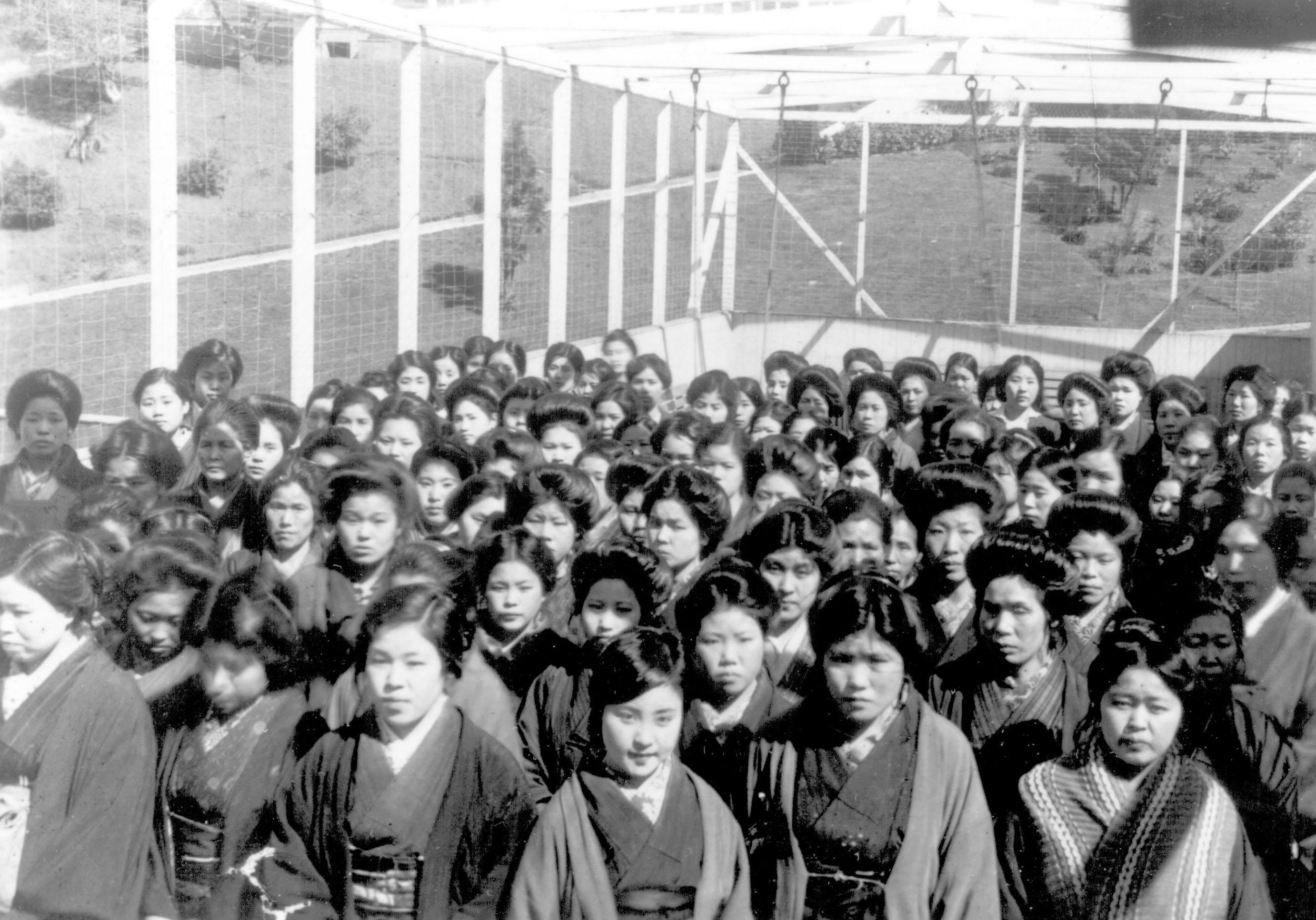Mosaic - Kou Yuki Kitano
1889-1994 | Born in Oita, Japan | Arrived on Angel Island in 1914
Kou Yuki Kitano arrived in the US as a “picture bride.” Picture brides left Japan for an uncertain future in a new country, joining husbands they had met only through photographs. Kou was one of 10,000 picture brides who passed through the Port of San Francisco between 1908 and 1920. She raised seven children with her husband Motoji in San Francisco’s Chinatown.
View of the Beppu Port in Oita Prefecture, Japan, c. 1910. Kou grew up in a nearby village.
Kou was working as a school teacher in her village in Oita, Japan when a woman approached her family with a simple question: “How would your daughter like to go to America?” She believed Kou would be a good match for her son, Motoji Kitano, who was living in San Francisco. Entry to the US was restricted for Japanese immigrants, but men who had arrived before 1907 like Motoji were permitted to bring their wives to the US. Many men chose to find a wife through a matchmaker or family member rather than return to Japan themselves.
Japanese picture brides stand in a line on a steamship, c. 1925. Courtesy of California State Parks
Kou decided to marry Motoji and move to California, even though she had never met him and had only seen him in a photograph. While some picture brides left Japan due to economic or social pressures, Kou’s daughters believe that their mother was motivated by the spirit of adventure. Kou embarked on the long steamship journey to San Francisco alongside other picture brides in third class.
Japanese picture brides gather in the recreation yard at the Angel Island Immigration Station, c. 1910. Courtesy of California State Parks, Number 090-706
When Kou arrived in San Francisco, all the picture brides on her ship were brought to Angel Island. They were each questioned and put through uncomfortable medical examinations. Kou later said: “It was not pleasant...It was difficult with so many of us stuck here, behind a fence.” Kou was released from Angel Island after a few days and taken by boat to San Francisco, where her husband was waiting for her.
Kou (left) with Masashi (center) and Motoji Kitano (right), c. 1914. Courtesy of Chizu Iiyama
As the boat approached the dock in San Francisco, Kou saw a young man throwing stones into the water. She recalls thinking: “I figure this was going to be my husband. And I knew he was going to be different.” She was pleased to find that her husband Motoji looked like his photos. They settled in San Francisco's Chinatown, where they raised seven children and ran a successful boarding house.
Residents of Japanese ancestry line up to register for "evacuation" in San Francisco, 1942. Behind them Executive Order 9066 is pasted to a wall. Courtesy of the Library of Congress
World War II upended the lives of the Kitanos. Over 110,000 Japanese Americans were forcibly removed from their homes, businesses, and communities under Executive Order 9066. The Kitanos were first incarcerated at the Santa Anita racetrack, then the Topaz concentration camp in Utah. After the war, Kou and Motoji moved to Berkeley and became naturalized US citizens in 1954.
Read Kou’s full story on AIISF’s Immigrant Voices.
Photo Caption: Left to right: Kou Yuki, Hisashi Kitano, and Motoji Kitano in 1914.







